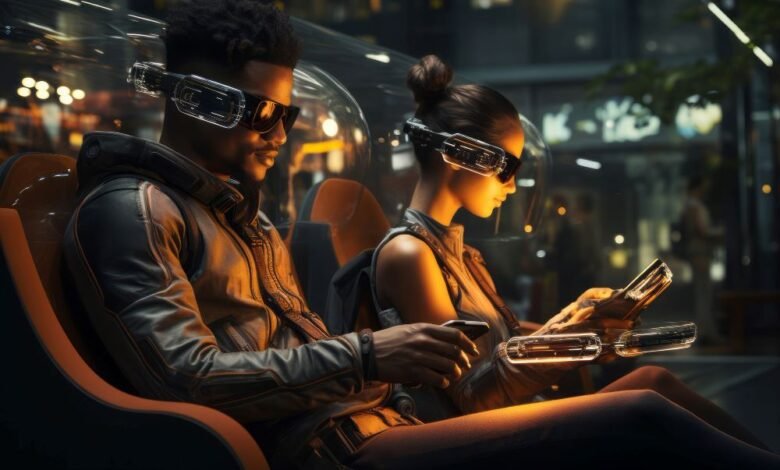
Introduction:
In the ever-evolving landscape of technology, two innovations have been making significant waves in recent years: artificial intelligence (AI) and blockchain. Individually, these technologies have revolutionized various industries, but their convergence is now opening up new possibilities, particularly in the realm of gaming. As AI continues to advance, its integration with blockchain technology is reshaping the gaming industry in unprecedented ways. This article explores the emerging trends of AI and blockchain integration in gaming technology, with a focus on the role of AI in gaming development and how blockchain enhances gaming experiences.
AI in Gaming:
AI has been a game-changer in the gaming industry, influencing game development, player experiences, and even the business models of gaming companies. With the rapid advancement of AI algorithms and technologies, game developers now have access to powerful tools for creating immersive and engaging gaming experiences.
One of the primary applications of AI in gaming is in non-player character (NPC) behavior and game environment simulations. AI algorithms enable NPCs to exhibit complex behaviors, react dynamically to player actions, and provide a more realistic and challenging gaming experience. Gone are the days of predictable NPC movements; AI-driven NPCs can adapt to different playstyles and strategies, making gameplay more dynamic and exciting.
Moreover, AI is revolutionizing game design through procedural generation techniques. Procedural generation algorithms use AI to create vast and diverse game worlds, levels, and assets automatically. This not only saves developers time and resources but also ensures that each playthrough offers unique experiences for players. Games like No Man’s Sky and Minecraft have leveraged procedural generation to create virtually endless worlds for players to explore.
Additionally, AI-powered analytics and player modeling are shaping how games are personalized and optimized for individual players. By analyzing player behavior and preferences, AI algorithms can tailor game experiences in real-time, delivering personalized content, challenges, and rewards. This level of personalization enhances player engagement and retention, ultimately driving the success of gaming titles.
Blockchain in Gaming:
Blockchain technology, known for its decentralized and transparent nature, is disrupting various industries, including gaming. By leveraging blockchain, game developers and players alike can benefit from enhanced security, ownership, and monetization opportunities.
One of the key advantages of blockchain in gaming is the concept of digital ownership and asset tokenization. In traditional gaming, players often invest time and money into acquiring in-game items, such as skins, weapons, or characters. However, these digital assets are typically owned and controlled by the game developers, leaving players vulnerable to loss or restriction of access.
Blockchain technology enables the tokenization of in-game assets, allowing players to have true ownership and control over their digital possessions. By recording ownership on a decentralized ledger, blockchain ensures that in-game assets are secure, transferable, and resistant to censorship or manipulation. Players can buy, sell, and trade digital assets freely, creating a thriving economy within games.
Moreover, blockchain-powered economies introduce new opportunities for monetization through concepts like non-fungible tokens (NFTs) and decentralized finance (DeFi). NFTs represent unique digital assets that can range from rare in-game items to digital artwork or collectibles. Through blockchain, these NFTs can be securely bought, sold, and traded, enabling new revenue streams for both developers and players.
Blockchain technology also addresses issues of trust and fairness in gaming, particularly in multiplayer and competitive environments. Smart contracts, programmable agreements executed on the blockchain, can ensure fair gameplay by automatically enforcing rules and distributing rewards based on predefined conditions. This transparency and immutability provided by blockchain enhance trust among players and reduce instances of cheating or fraud.
AI and Blockchain Integration in Gaming:
The convergence of AI and blockchain is poised to revolutionize the gaming industry further, offering new possibilities for innovation and disruption. By combining the capabilities of AI-driven gameplay with the security and transparency of blockchain technology, developers can create truly immersive and decentralized gaming experiences.
One of the most promising applications of AI and blockchain integration in gaming is in content generation and user-generated content (UGC) platforms. AI algorithms can analyze player-generated content, such as levels, mods, or customizations, and curate high-quality experiences for other players. Blockchain technology ensures that creators are fairly compensated for their contributions, either through direct payments or royalties secured by smart contracts.
Furthermore, AI can enhance the governance and management of decentralized gaming platforms built on blockchain networks. Autonomous agents powered by AI can monitor in-game economies, detect anomalies or fraud, and enforce community-driven rules and regulations. This autonomous governance model fosters transparency, fairness, and resilience within decentralized gaming ecosystems.
Another area where AI and blockchain integration show promise is in anti-cheat mechanisms and player behavior analysis. AI algorithms can analyze gameplay data in real-time to detect suspicious or unfair behavior, such as cheating or hacking. By leveraging blockchain technology, these detection algorithms can be decentralized and immutable, making it difficult for malicious actors to manipulate or evade detection.
Moreover, AI-driven matchmaking systems can use player data and behavior patterns to create balanced and enjoyable gaming experiences. By analyzing factors such as skill level, playstyle, and preferences, AI algorithms can match players with compatible opponents or teammates. It enhancing the overall gaming experience and reducing frustration.
Challenges and Considerations:
While the integration of AI and blockchain in gaming holds immense potential, it also presents challenges and considerations that developers and stakeholders must address. One challenge is the scalability of AI and blockchain technologies, particularly in large-scale multiplayer games with millions of concurrent players. Scalability solutions, such as sharding and layer-two protocols, are essential to support the growing demands of gaming platforms.
Moreover, ensuring data privacy and security remains a paramount concern, especially when leveraging AI algorithms to analyze player behavior and preferences. Developers must implement robust privacy measures and encryption techniques to protect sensitive player data from unauthorized access or exploitation.
Additionally, regulatory and legal considerations surrounding blockchain-based gaming platforms, particularly regarding tokenization, ownership rights, and taxation, require careful navigation. Collaboration between industry stakeholders, regulators, and legal experts is essential to establish clear guidelines and frameworks . That foster innovation while protecting the rights and interests of all parties involved.
Conclusion:
The integration of AI and blockchain technologies is ushering in a new era of innovation and disruption in the gaming industry. From AI-driven gameplay experiences to blockchain-powered ownership and monetization models. These emerging trends are reshaping how games are developed, distributed, and enjoyed by players worldwide. As developers continue to explore the synergies between AI and blockchain. The future of gaming promises to be more immersive, decentralized, and inclusive than ever before.



